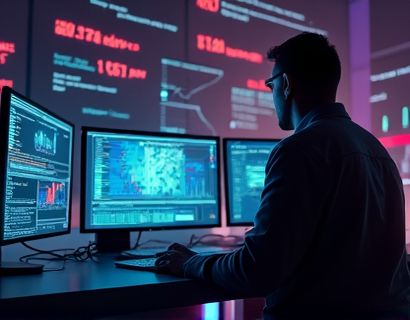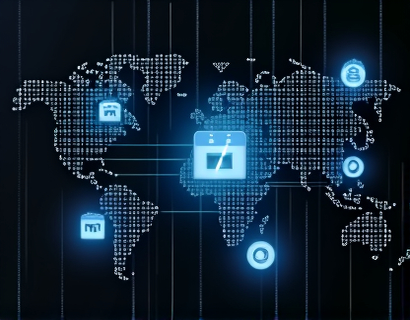Blockchain-Powered Asset Tokenization: Transforming Real-World Assets for Enhanced Market Accessibility and Liquidity
Blockchain technology is at the forefront of a revolutionary shift in asset management, enabling the seamless tokenization of real-world assets. This innovative approach not only enhances liquidity and market accessibility but also integrates physical assets into the digital ecosystem securely and transparently. By leveraging blockchain, individuals and businesses can unlock new potentials, streamline transactions, and expand their market reach, all within a secure and trustworthy environment.
The concept of asset tokenization involves converting tangible assets such as real estate, art, infrastructure, and even intangible assets like patents and intellectual property into digital tokens on a blockchain. These tokens represent fractional ownership or rights to the underlying asset, making it possible for a broader range of investors to participate in markets that were previously accessible only to a select few. This democratization of asset ownership is a significant step forward in financial inclusivity and market efficiency.
Enhancing Liquidity through Tokenization
One of the primary benefits of blockchain-powered asset tokenization is the enhancement of liquidity. Traditional real-world assets are often illiquid, meaning they cannot be easily bought or sold without significantly affecting their price. Tokenization changes this dynamic by allowing assets to be divided into smaller, tradable units. This divisibility means that even a small fraction of an asset can change hands, making it easier for investors to buy, sell, and trade without causing substantial price fluctuations.
For example, a commercial real estate property worth millions can be tokenized into thousands or even millions of smaller tokens. Each token represents a fraction of the property's value, allowing multiple investors to purchase and own parts of the property. This fractional ownership model not only increases the number of potential buyers and sellers but also reduces the barriers to entry, thereby boosting market liquidity.
Improving Market Accessibility
Accessibility is another critical area where blockchain-driven asset tokenization makes a significant impact. Traditionally, high-value assets require substantial capital to invest in, limiting participation to wealthy individuals or institutional investors. Tokenization lowers these barriers by enabling smaller investments through digital tokens. This shift opens up opportunities for retail investors, startups, and even individual creators to participate in asset markets that were once exclusive.
Moreover, the global nature of blockchain technology means that asset tokenization is not bound by geographical limitations. Investors from around the world can access and trade tokens representing real-world assets, thereby increasing the pool of potential buyers and sellers. This global reach not only enhances liquidity but also fosters a more interconnected and efficient global market.
Ensuring Security and Transparency
Security and transparency are foundational to blockchain technology, and these attributes are crucial in the context of asset tokenization. Blockchain's decentralized and immutable ledger ensures that all transactions related to tokenized assets are recorded transparently and cannot be altered or tampered with. This level of security reduces the risk of fraud and enhances trust among market participants.
Smart contracts, self-executing contracts with the terms directly written into code, play a pivotal role in this process. They automate and enforce the rules of asset transactions, ensuring that all parties adhere to the agreed terms without the need for intermediaries. This not only reduces transaction costs but also speeds up the process, making asset management more efficient and reliable.
Case Studies and Real-World Applications
Several notable projects and platforms are already leveraging blockchain for asset tokenization, demonstrating its practical applications and benefits. One such example is RealT, a platform that tokenizes commercial real estate. RealT allows investors to buy, sell, and trade fractions of commercial properties using digital tokens on the Ethereum blockchain. This approach has democratized access to real estate investments, enabling a wider range of investors to participate in the market.
Another instance is the tokenization of art and collectibles. Platforms like SuperRare use blockchain to authenticate and tokenize unique digital art, providing artists and collectors with a secure and transparent way to buy, sell, and own digital art. This not only preserves the provenance and authenticity of art pieces but also opens new revenue streams for creators and collectors.
Challenges and Considerations
Despite the numerous advantages, asset tokenization is not without its challenges. Regulatory uncertainty remains a significant hurdle, as different jurisdictions have varying approaches to blockchain and tokenized assets. Compliance with securities laws, anti-money laundering regulations, and other legal frameworks is essential to ensure the legitimacy and sustainability of tokenization projects.
Technical challenges also exist, such as scalability and interoperability. As the number of tokenized assets grows, blockchain networks must handle increasing transaction volumes efficiently. Additionally, ensuring that different blockchain platforms can work together seamlessly is crucial for a cohesive and functional ecosystem.
Future Prospects
The future of blockchain-powered asset tokenization looks promising, with ongoing advancements addressing current challenges and opening new possibilities. As regulatory frameworks evolve and technology improves, the adoption of tokenization is expected to grow across various asset classes. The integration of blockchain with other emerging technologies, such as the Internet of Things (IoT) and artificial intelligence (AI), could further enhance the capabilities and applications of asset tokenization.
For instance, IoT can provide real-time data and automation for asset management, while AI can optimize investment strategies and risk assessments. These synergies will not only make asset tokenization more efficient but also unlock new use cases and markets, driving innovation and growth in the asset management industry.
Conclusion
Blockchain-powered asset tokenization is transforming the way real-world assets are managed, traded, and invested in. By enhancing liquidity, improving market accessibility, ensuring security and transparency, and addressing traditional challenges, tokenization is paving the way for a more inclusive and efficient asset market. As the technology continues to mature and gain broader acceptance, the potential for innovation and growth in asset management is vast, offering exciting opportunities for all stakeholders involved.










































